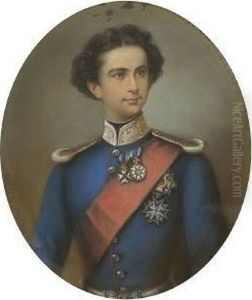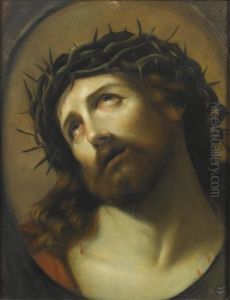August Fleischmann Paintings
August Fleischmann was a German artist known for his contributions to the 19th-century European art scene, particularly in the realms of painting and drawing. Born in 1824, Fleischmann's career unfolded during a period marked by significant transformations in the art world, including the rise of Romanticism and the early inklings of Impressionism. Despite the brevity of his life, ending in 1868, his work reflected the broader artistic movements of his time, capturing both the emotional intensity of Romanticism and the evolving aesthetic sensibilities that would eventually lead to modernism.
Fleischmann's artistic journey began in his native Germany, where he was initially trained in the traditional academic style. This foundation provided him with the technical skills necessary to explore and eventually transcend the artistic conventions of his era. His early works were characterized by detailed realism and a profound appreciation for nature, themes common among Romantic artists. However, as his style evolved, Fleischmann increasingly sought to capture the transient effects of light and atmosphere, a pursuit that aligned him with the precursors of the Impressionist movement.
Throughout his career, Fleischmann traveled extensively across Europe, drawing inspiration from various landscapes and cities. These travels were not only pivotal in broadening his artistic horizon but also in exposing him to the works of other contemporary artists, whose influences can be discerned in his evolving style. Despite facing the challenges of a short life, his oeuvre includes a wide range of subjects, from vibrant cityscapes to serene natural scenes, each rendered with a keen eye for detail and a distinctive sensitivity to the ephemeral qualities of light.
Fleischmann's contributions to art were cut short by his untimely death in 1868. Though he did not live to see the full fruition of the movements he anticipated, his works remain as testament to his talent and his place within the transitional period of 19th-century art. Today, Fleischmann's paintings and drawings are celebrated for their technical skill and visionary qualities, offering insights into the pivotal moments of art history they embody. His legacy, though perhaps not as widely recognized as that of his contemporaries, underscores the importance of transitional figures in the evolution of artistic expression.

